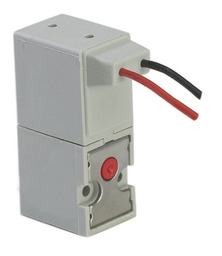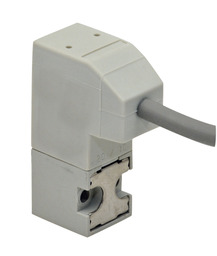Understanding Latching Valves: A Low-Power Control Solution
Managing power is a constant challenge—especially in systems that run on batteries or operate in hard-to-reach locations. Every component has to justify its energy draw. Electronic latching valves offer a smart way to cut consumption without adding complexity. By requiring power only during state changes, they provide reliable pneumatic control while minimizing heat, extending battery life, and reducing load on the power supply.
When designing electronic pneumatic systems, power efficiency often takes center stage—especially in portable, battery-powered, or energy-sensitive applications. That’s where latching valves shine. These clever electromechanical components toggle between two states using only a brief pulse of power. Once actuated, they remain in position without the need for continuous energy consumption. Think of them like a detented toggle switch, but for air.
Video filmed at Clippard in Cincinnati, Ohio
Subscribe to Clippard's YouTube channel
A latching valve is a type of solenoid valve that holds its last actuated state until instructed to change. Unlike standard solenoid valves, which require constant current to maintain their position, latching valves need power only during the transition. In Europe, these are often referred to as bi-polar valves—a reference to how they typically operate by reversing polarity or utilizing dual control inputs.
The most compelling advantage of latching valves is their exceptionally low power consumption. Because they don’t draw current continuously, they help extend battery life, reduce heat output, and ease demands on the power supply. This makes them a smart choice for systems that need to stay active over long periods with minimal energy use.
Practical Applications
- Battery-powered medical devices
- Wearable or portable analyzers
- Environmental monitoring systems
- Remote fluid sampling
- Field-deployed control panels
Benefits
- Simplified control logic
- Minimal heat generation
- Extended service life due to reduced electrical load
- System-level energy optimization through reduced power profile
Clippard offers two primary miniature latching valve configurations: a two-wire 10 mm version and a three-wire 15 mm version. The 10 mm valve changes states when the polarity of the power supply is inverted—send a positive pulse to open it, then reverse the polarity to close it. The 15 mm version, on the other hand, uses a dedicated wire for each action: one to actuate, one to de-actuate, and a common wire shared between them. This design eliminates the need for polarity reversal and often simplifies control circuitry.
Both sizes are built to meet Clippard’s standards for compactness, reliability, and durability. These valves are well-suited for integration into manifold assemblies or space-constrained enclosures. They’re commonly found in systems with low-duty cycle requirements or those that rely on battery power, such as portable medical devices, field analyzers, environmental monitoring stations, and remote control panels.
Beyond power savings, latching valves offer several engineering benefits. They produce less heat, simplify control logic (especially in the three-wire design), reduce electrical wear on coils, and contribute to overall system-level energy optimization. Their ability to maintain position without constant energization also supports cleaner system design with lower thermal and electromagnetic impact.
Could your application benefit from an electronic latching valve? Contact Clippard or your local Clippard distributor today to discuss your specific needs.
|
Related Products |
||||
10 mm Latching Valves |
15 mm Latching Valves |
|||
Related Content
- An Overview of Clippard's 10 & 15 mm Electronic Valves
- Customization Options for Clippard's 10 & 15 mm Electronic Valves





